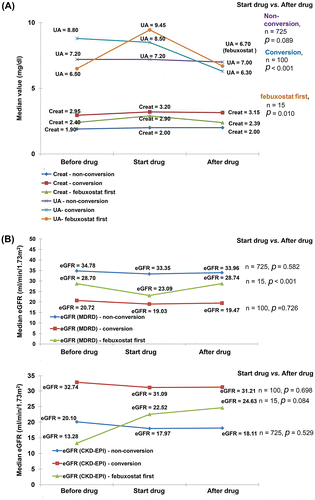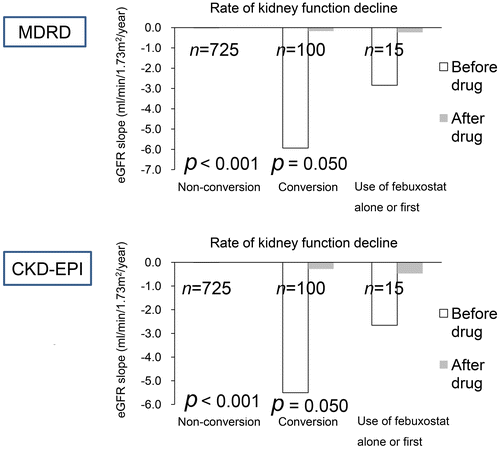Figures & data
Table 1. Baseline characteristics of the study population
Table 2. Characteristics of patients with chronic kidney diseases and hyperuricemia with medications
Figure 2. Serial change of laboratory data, including (A) change of median serum uric acid concentration and serum creatinine, and (B) estimated glomerular filtration rate by the Modification of Diet in Renal Disease (MDRD) equation and Chronic Kidney Disease Epidemiology Collaboration (CKD-EPI) equation.

Figure 3. Decline of estimated glomerular filtration rate before and after urate-lowering agents.
Notes: Our data were mostly calculated by the Wilcoxon sing rank test using values for start drug and after drug. The Friedman test was not used for repetitive three tests in one person. The p-value of the febuxostat group is not shown because of the low power of analysis.

Table 3. Association of baseline variables with end-stage renal disease using multivariable Cox proportional Hazard analysis
Table 4. Association of baseline variables with death using multivariable Cox proportional Hazard analysis

